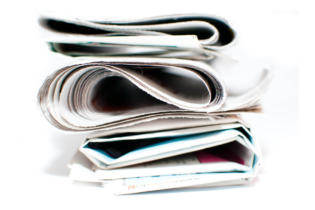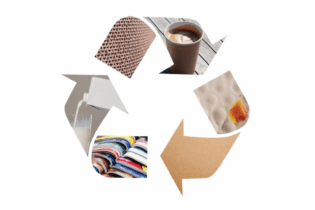- Educate employees about what is recyclable and what is not;
- Use printable material and posters available on www.recyclepaper.co.za for office communal areas.
| RECYCLABLE | NOT RECYCLABLE |
| · Magazines and brochures, including glossy varieties
· Newspapers
· Office and shredded paper, envelopes
· Cardboard boxes of any kind – dry food, cosmetic and medicine boxes; roll cores, packing cartons (flattened)
· Old telephone directories and books
· Envelopes
· Paper giftwrap · Milk, beverage and food cartons (such as Tetra Pak and SIG Combibloc liquid packaging) |
· Wet or dirty paper and cardboard · Used paper plates, disposable nappies, tissues and toilet paper · Wax-coated, foil-lined or laminated boxes · Cement and dog food bags · Foil gift wrapping, carbon and laminated paper |
- Set-up a two-bin system – receptacles for paper recycling and bins for food, liquid and non-recyclable waste with clear and simple messaging and graphics;
- Remind employees around the importance of separation — and remind them often.
- Contact one of PRASA’s members about paper recycling boxes from Mpact Recycling, Sappi ReFibre and Neopak Recycling.
- Ensure that each desk is equipped with a tray or office recycler solely for paper and board;
- Install paper recycling receptacles in key locations:
- At each desk
- At each printing or copying station
- In meeting and break rooms, and kitchen areas
- In reception
- For every paper recycling bin, there should be a general waste bin alongside it.
- Involve cleaning teams in recycling initiatives;
- If waste streams are mixed, the recyclable paper will be contaminated and become worthless – this renders the recycling programme fruitless
- Assign a sheltered area in which to keep recycled paper clean and dry;
- Where possible, keep office paper (mainly white bond paper) separate from newspapers and magazines and cardboard boxes;
- Partner with a recycling collection agent that meets your needs – this could be a service offered by a big company, a smaller business or an informal collector who can benefit from your paper collection;
- Visit mywaste.co.za for collection programmes or buy-back centres in your area;
- Support a local school or charity’s recycling fundraising initiatives (e.g. the Ronnie Recycler programme) as your recyclable paper could boost the tonnages they collect and increase the funds raised;
- Visit recyclepaper.co.za for a list of its members.








